Pakistan has a bit of a tarnished reputation for most of the Czech population. Yes, it is the country where Osama was captured and where there is an earthquake or flood every now and then. In recent years, Pakistan has also been mentioned in our media because of a Czech drug smuggler, and last year there was a rescue of two Czech mountaineers who climbed the seven-thousand-foot Rakaposhi mountain without a permit. One would think that this Islamic republic would be a harbinger of bad news for the Czechs, and a few people in my area were hesitant about my plans to visit for a month in August. "Surely it's a good idea to go to such a place when you have a young daughter at home and a second child on the way?"
I am sure you know that there are fourteen eight-thousanders in the world, some in the Himalayas and others in Karakoram. There are five in Pakistan and apart from the dreaded K2, there are also Gasherbrum I and II, Broad Peak and Nanga Parbat. Nanga Parbat, with a bit of luck, can be seen on a flight from Islamabad to Skardu and all the other Pakistani figure eights can be seen on the Baltoro trek. You'll be breathing in the history of mountaineering from all sides. Even as a young boy I read about the duel between mountaineering legends Messner and Kukuczka, whose rivalry to climb the Himalayan crown also took place in these parts. The whole feeling is enhanced by the fact that we are here at the same time together with Mara Holeček and his partners, who are trying to climb the summit of Masherbrum, which has not been climbed for decades. Kilometers of vertical walls, one sharp peak next to another, impenetrable saddles and all of this rising to eight thousand. You won't see so much mountain beauty anywhere else!
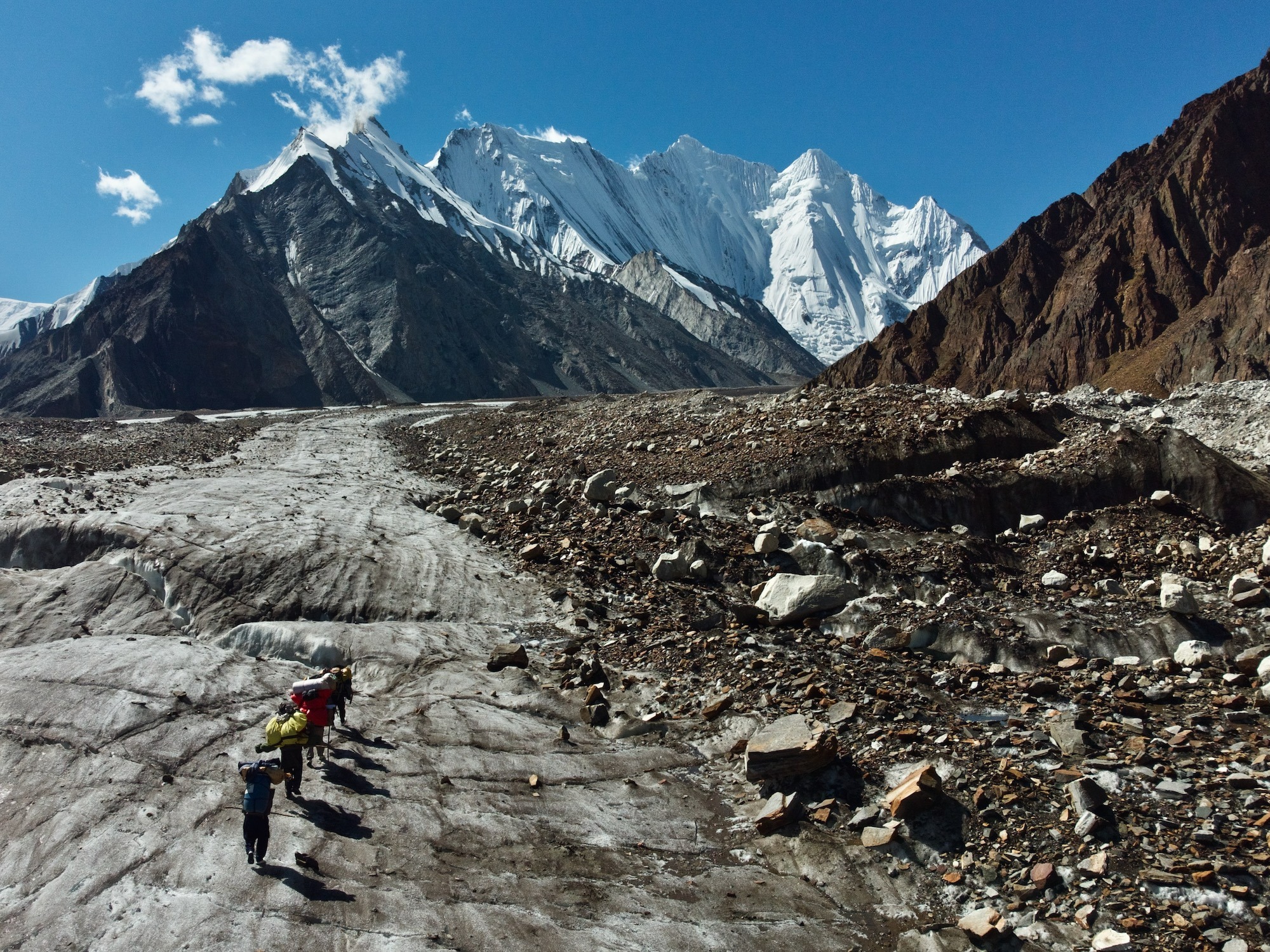
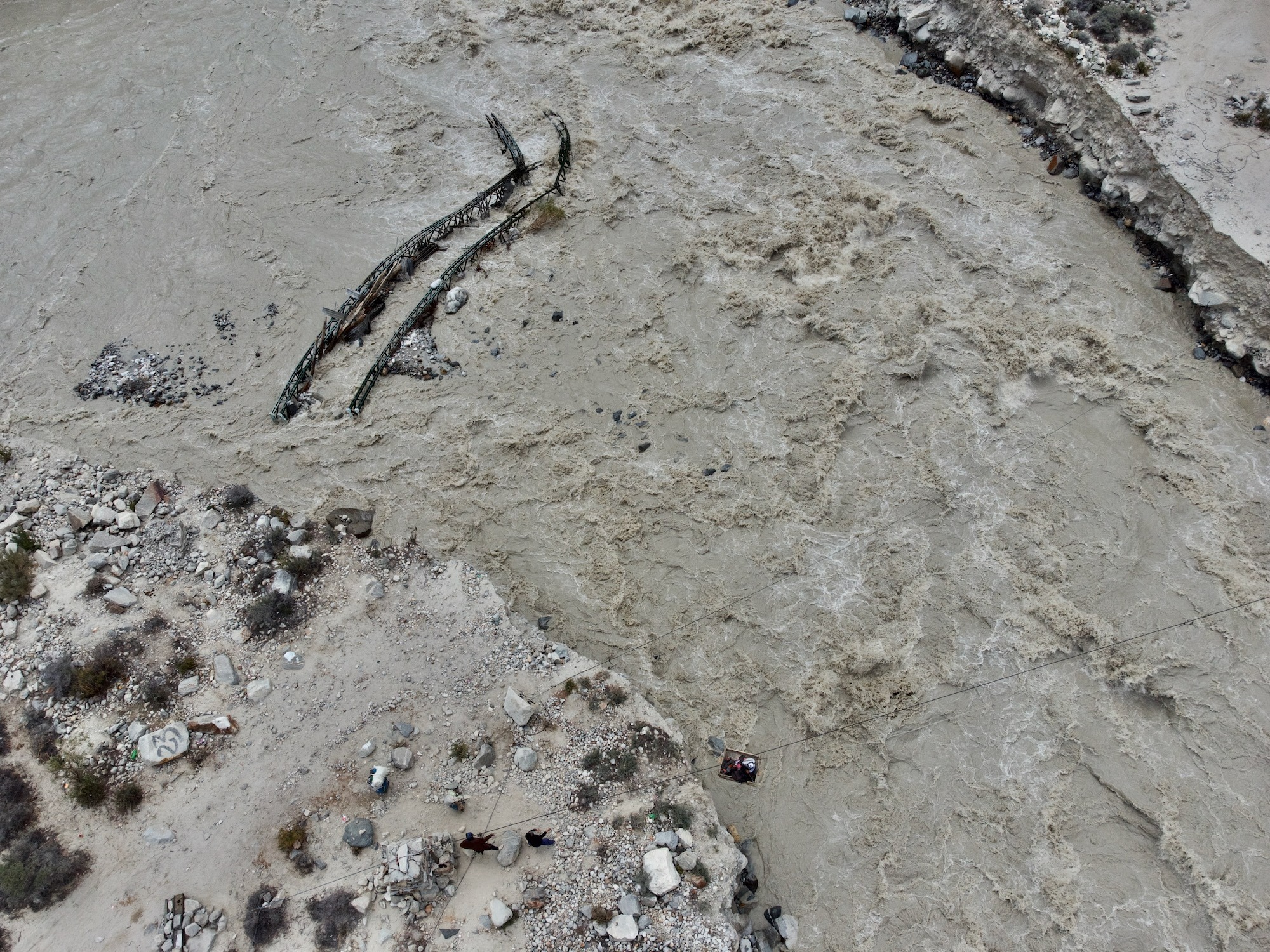
The journey itself, however, is more of a punishment. Temperatures of 50°C are not uncommon in the lowlands of Pakistan and can be as high as 30°C in the mountains. There's not much shade to be found, so without sunscreen you look like a grilled chicken. The soil is so arid that you spend the first few days eating dust. For two days you walk to the foot of the glacier on either gravel or rocks and the vast majority of the glacier is covered in an endless horde of rocks. So you're constantly looking underfoot and zigzagging between crevasses and glacial rivers. At the time of our visit, Pakistan is experiencing extreme rainfall and this is evident on the trek with collapsed bridges. Even on the Terenaki road to Ashola, we have to switch between cars twice due to fallen bridges. The real excitement, however, comes when the pedestrian bridge is also down and we reach the other side of the river using an improvised basket suspended by a pulley on a rope.
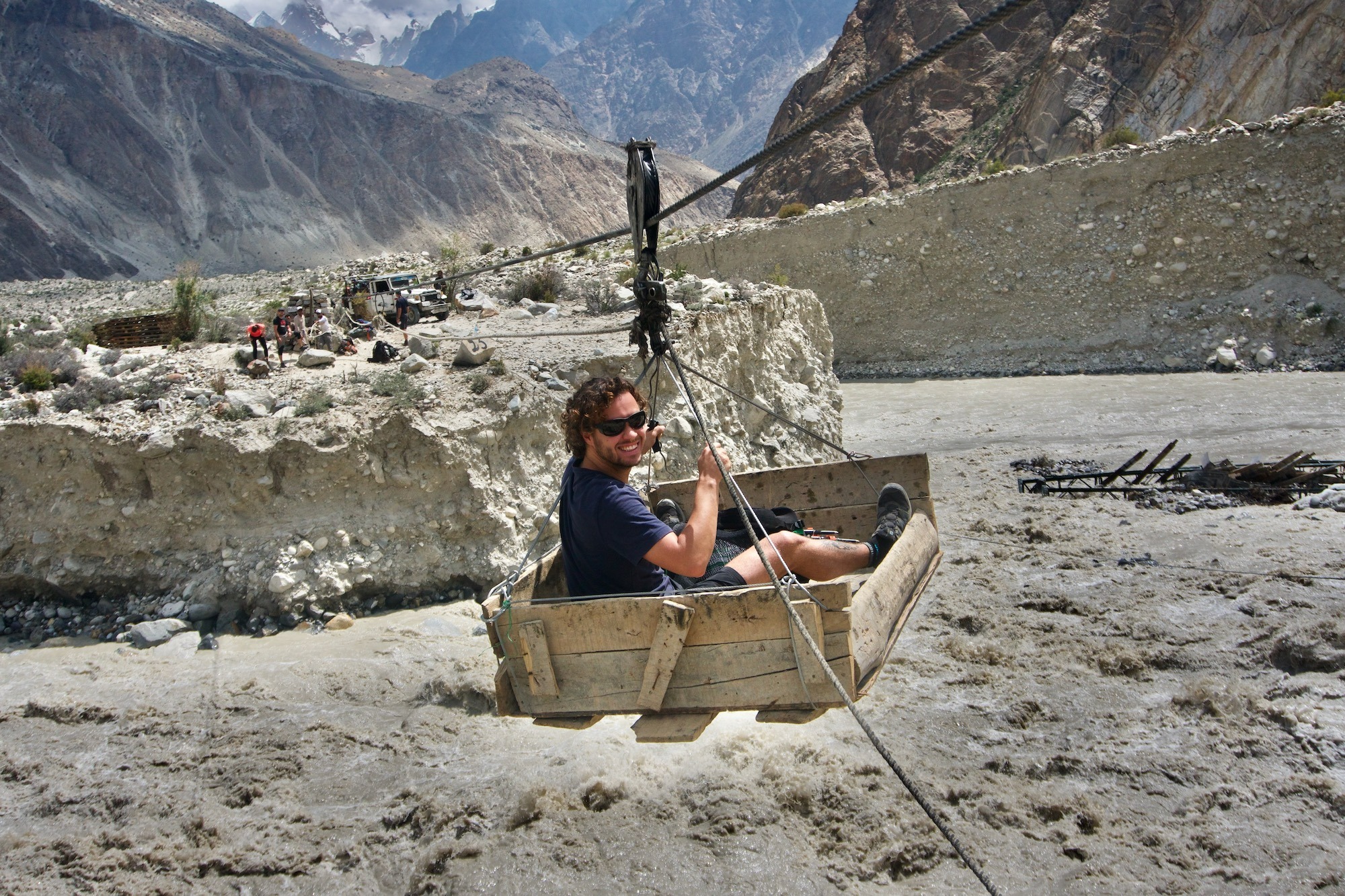
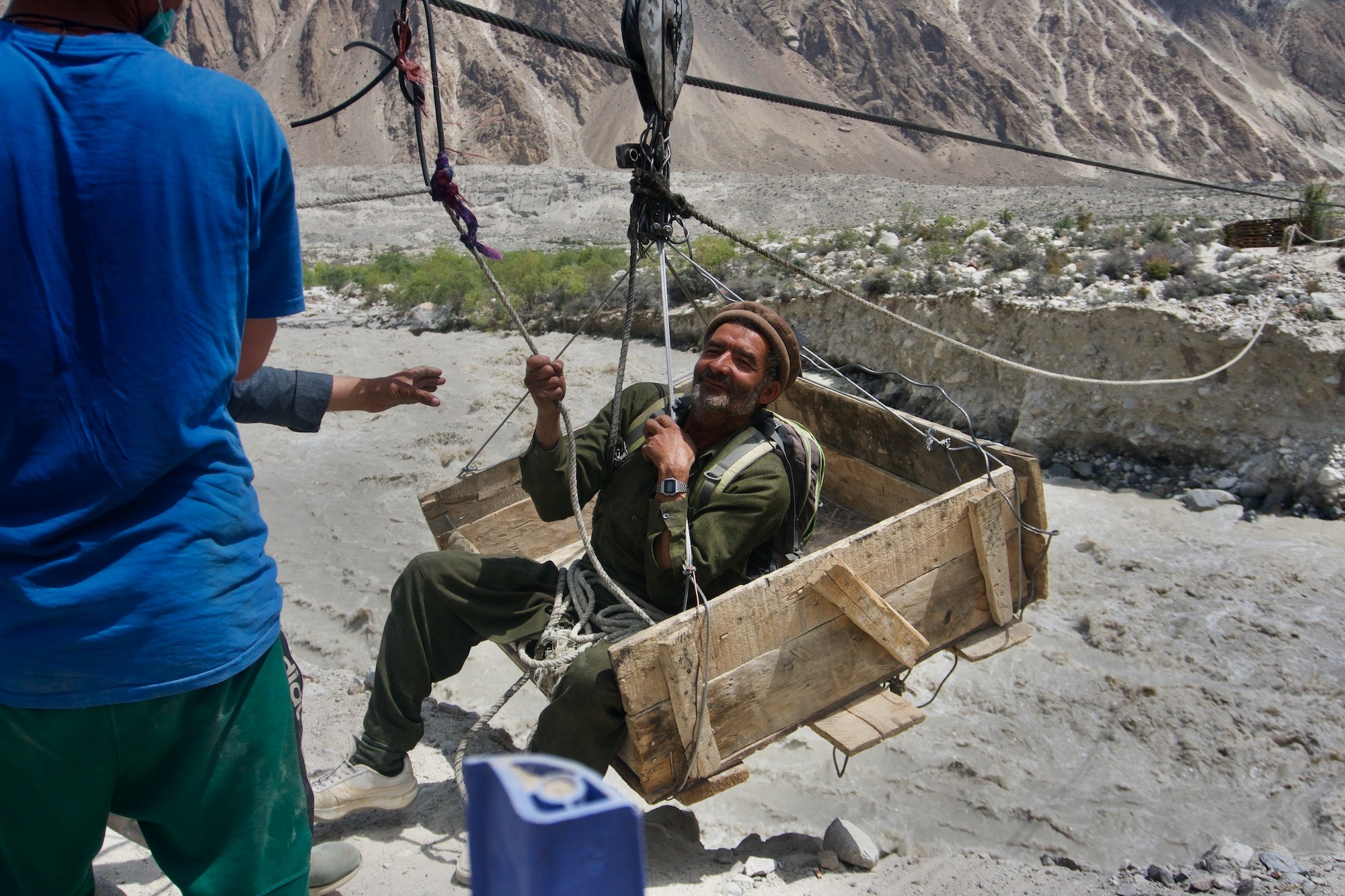
When asked how often they change or check the mechanism I am answered with a smile. As long as it's working, they don't touch it. Sometimes it's nice to have the universal brown underwear with you... For the first week you climb 4,800 metres day after day and gradually see all the mountain giants including Masherbrum, K2 and Broad Peak.
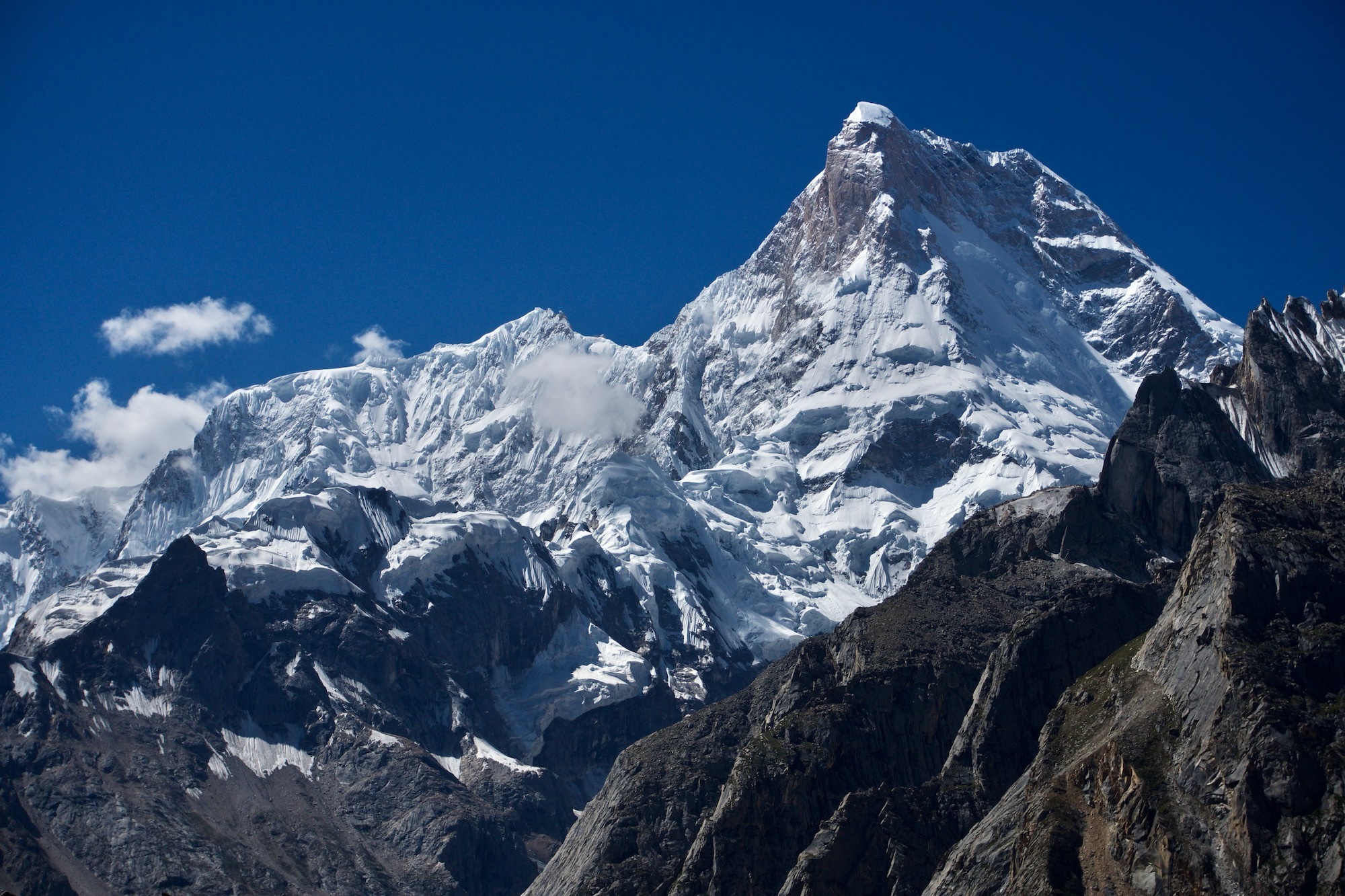
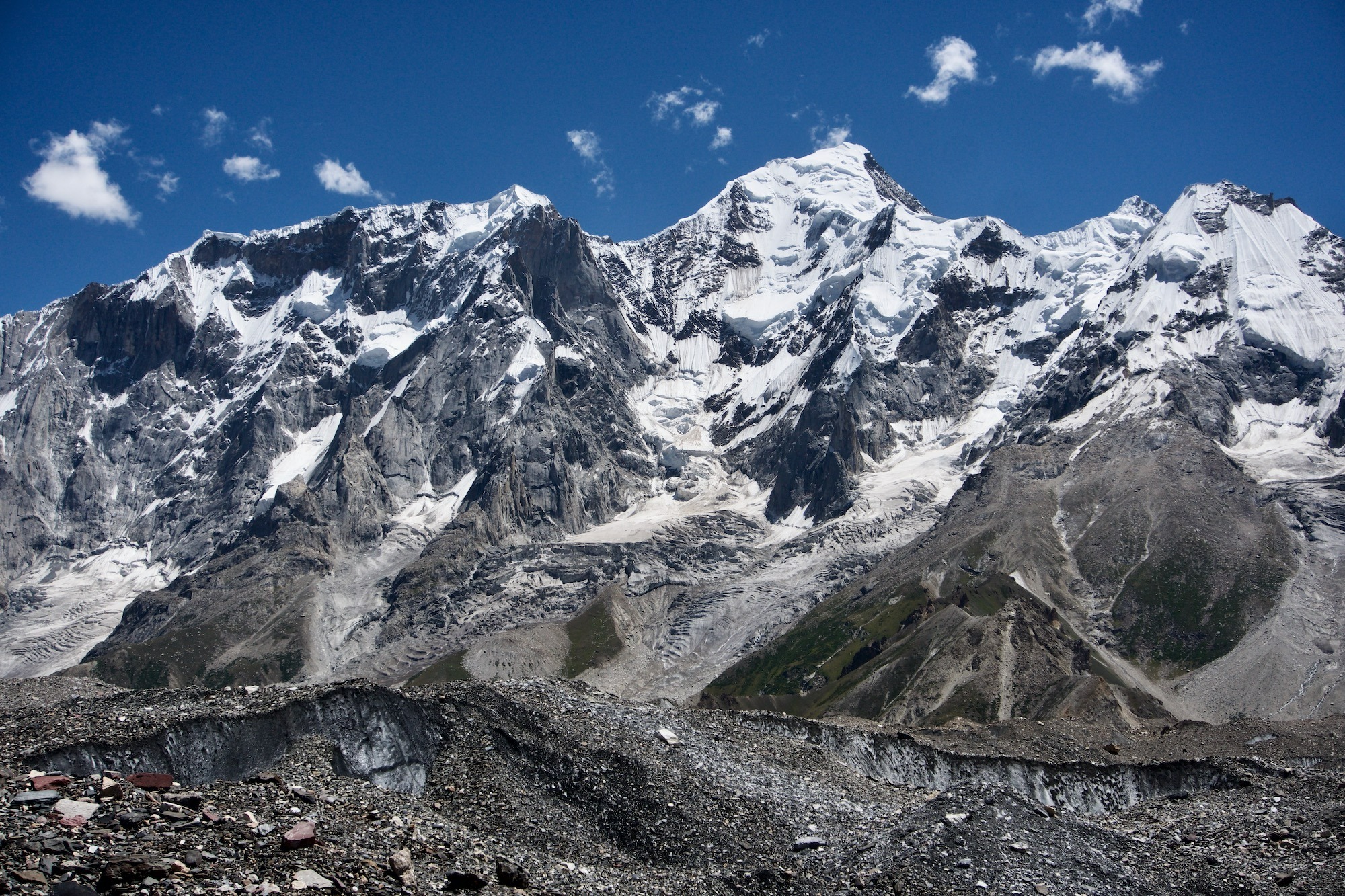
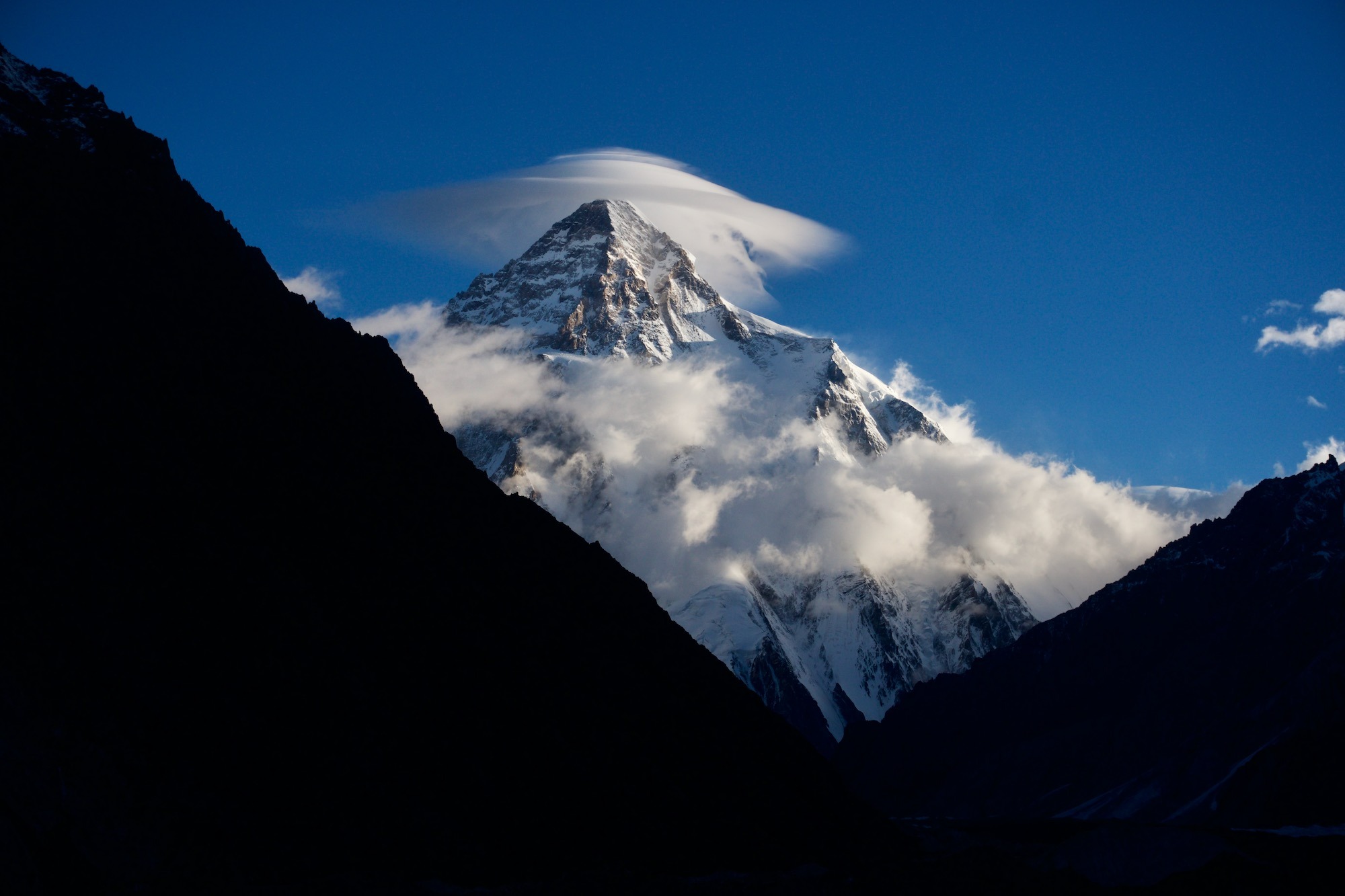
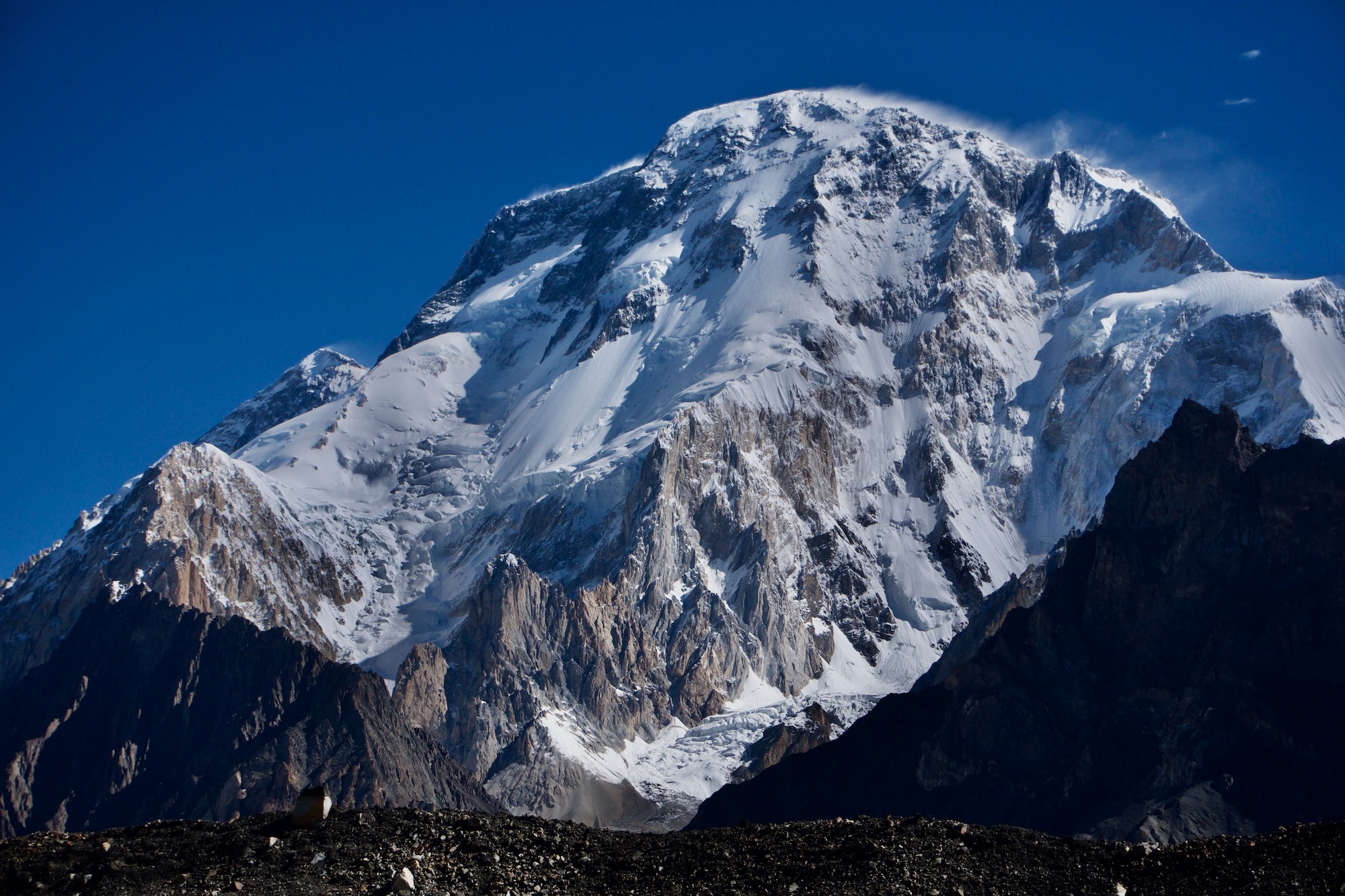
After ten days of trekking you will reach an altitude of 5,000 metres and the next morning you will climb to the highest point, the so-called Gondogoro Pass (5,585 metres). To climb it, it is ideal to have almost complete glacier equipment with you, including helmet, crampons, saddlebags and jumar. We wake up at midnight and since it is supposed to be nice today (after several days of bad weather), several dozen people are preparing to cross the pass. The trip up using the jumar on fixed ropes is actually pretty cool, and by headlamp light I watch the surrounding seracs and cross a few fallen avalanches. As we reach the saddle we are greeted by the first rays of sunlight and enjoy the view of all the eight-thousanders.
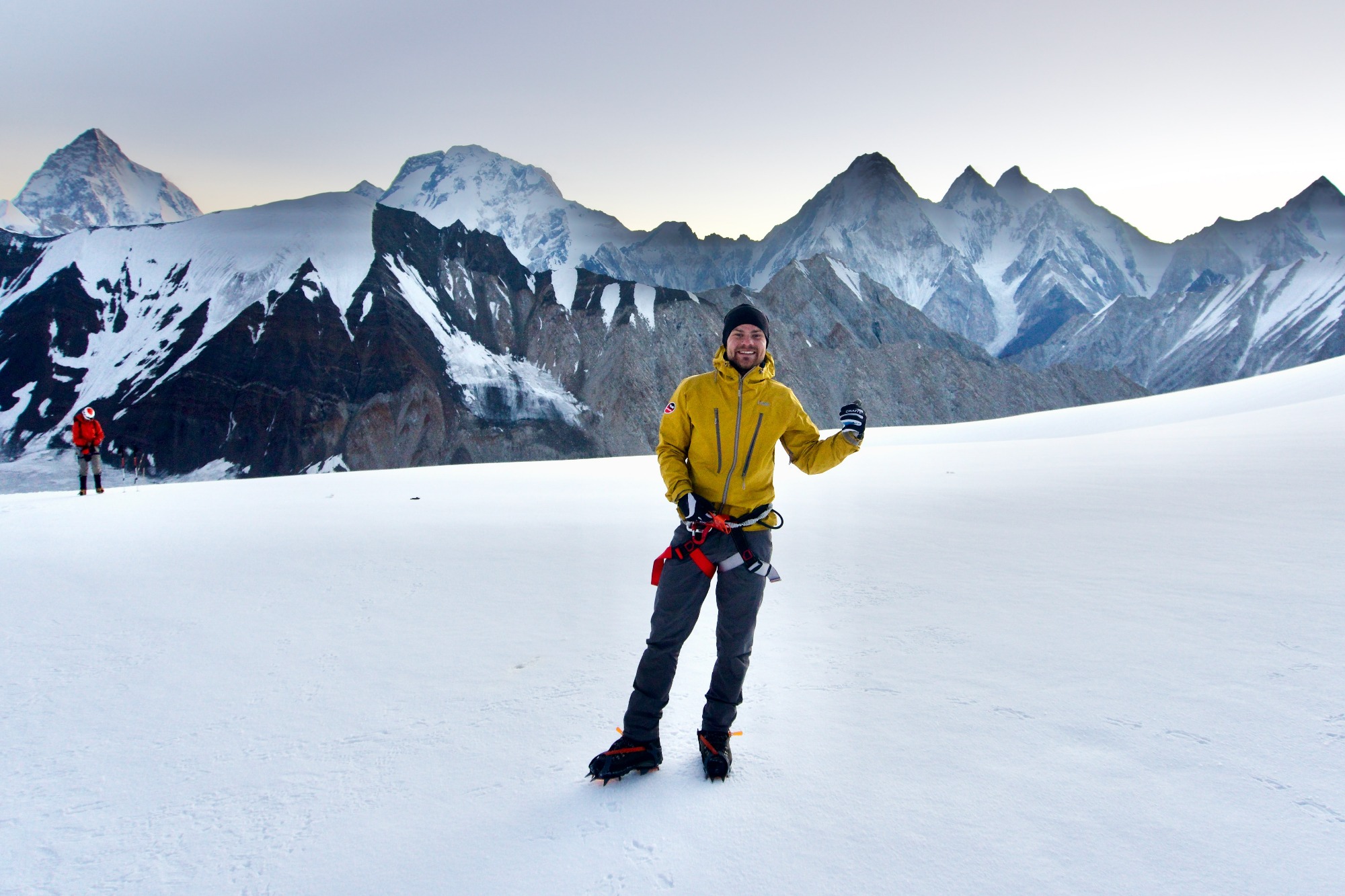
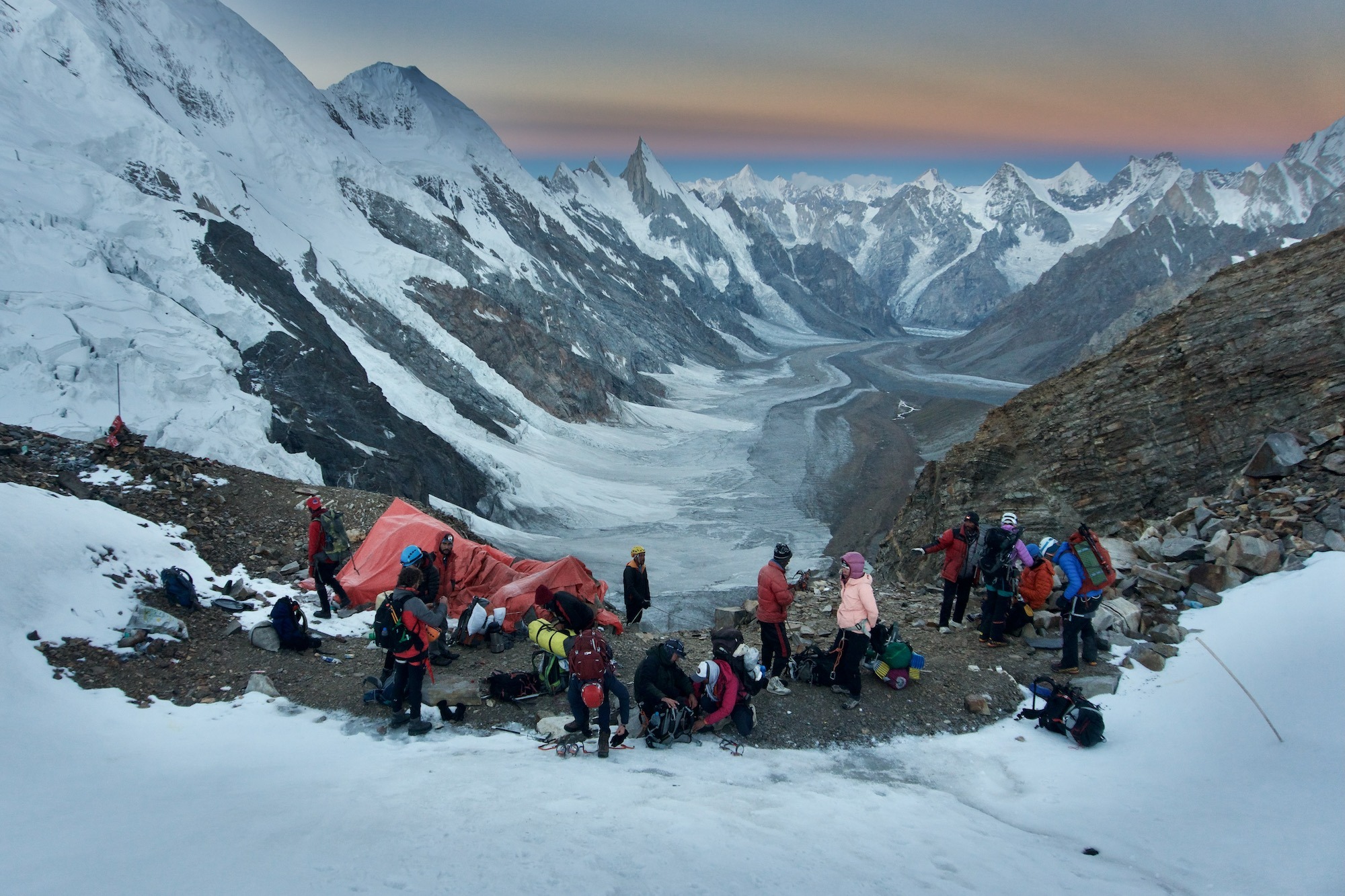
But the hard part is yet to come. The way down is not particularly technically demanding, but it is full of eroding rock and loose stones. There are fixed ropes, but they are up to 70 metres long and totally unsuitable for such a large group of inexperienced people. Add to that the fact that the vast majority of hikers are completely unable to navigate in this kind of terrain. They involuntarily drop loose rocks on the trekkers below them and instead of just holding on to the rope and having confidence in their own steps, they hang spastically from the fixed rope. They sway it from side to side, so I constantly watch people fall on their backsides under the force of someone else's strength and behave dangerously towards others. So if you go over the Gondogoro pass, I recommend starting as early as possible and avoiding the traffic. It takes us over two hours to descend the roughly one kilometer stretch, and several times I observe free-falling rocks kicked up by clumsily moving trekkers. The last two days of the trek are rewarding, however, and we emerge from the tortuous glacier onto scenic alpine-style trails.
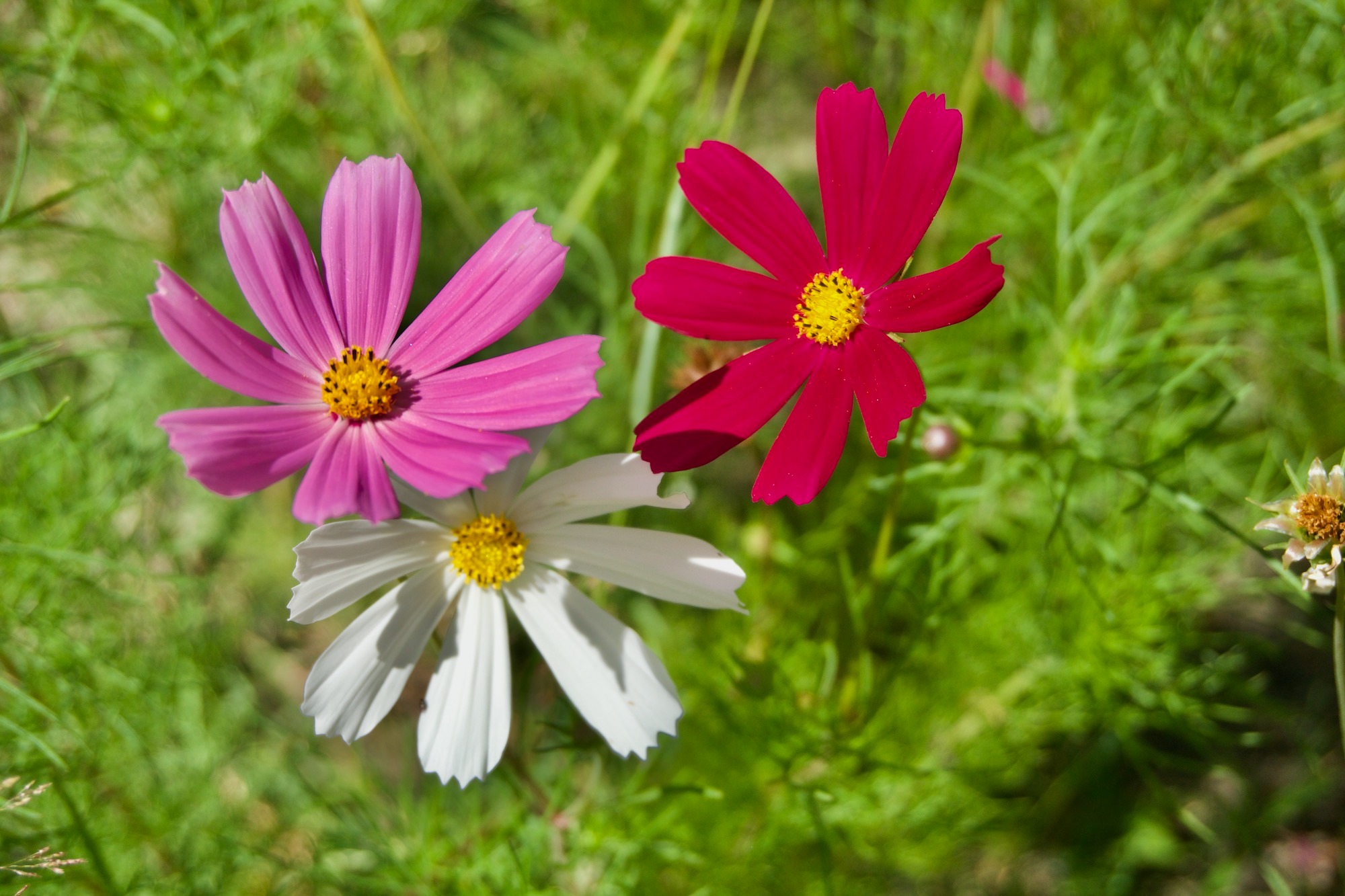
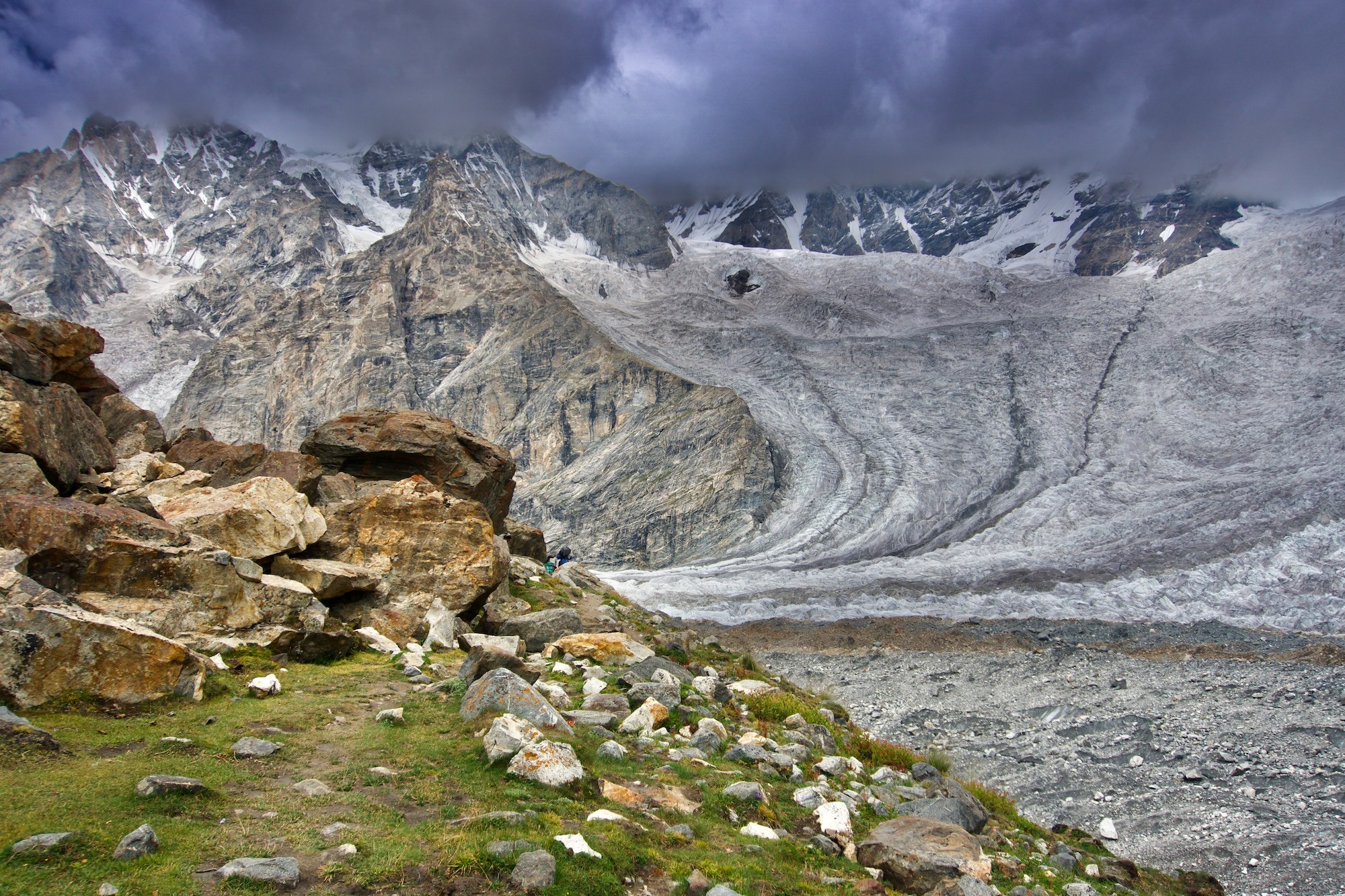
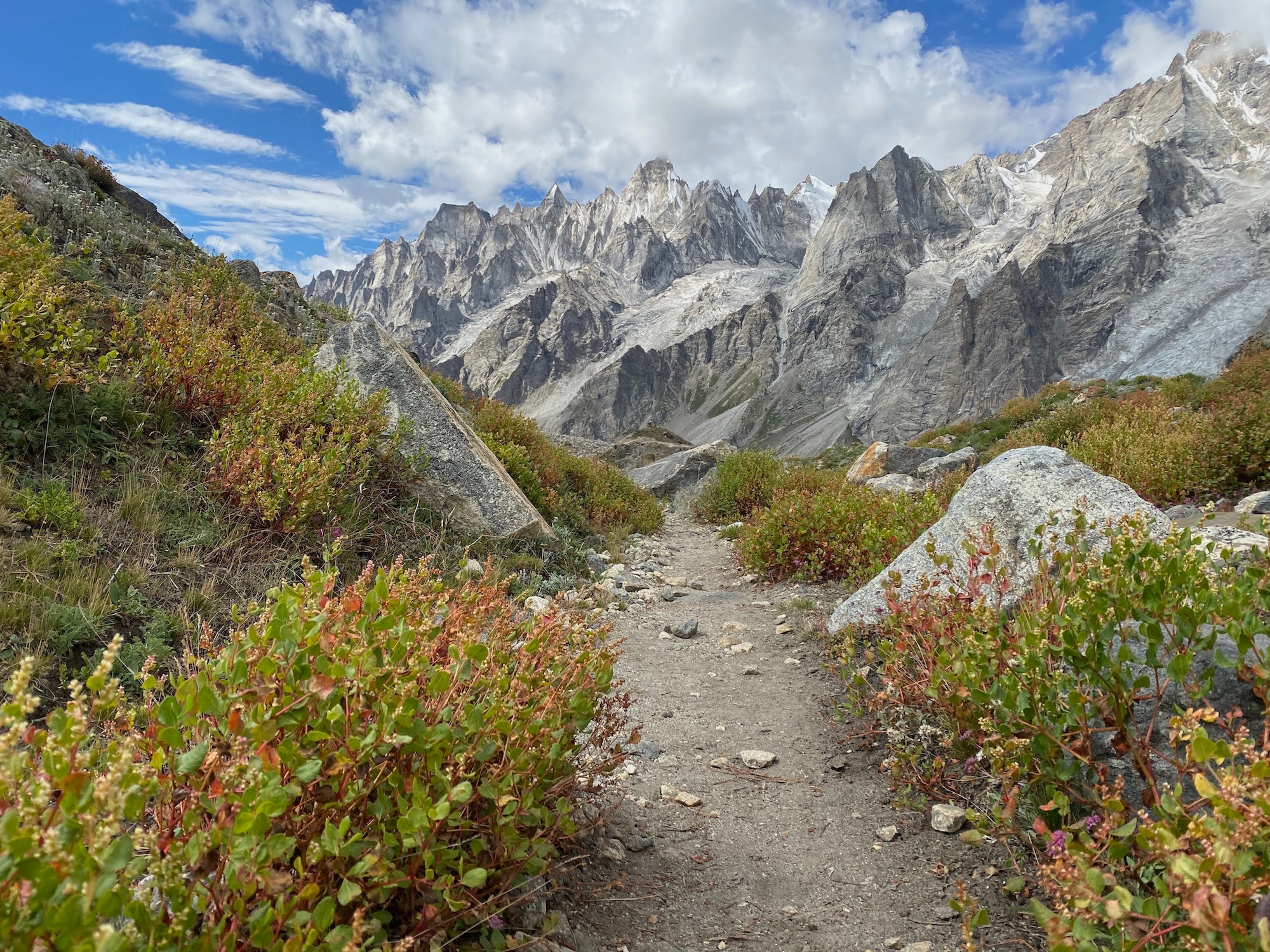
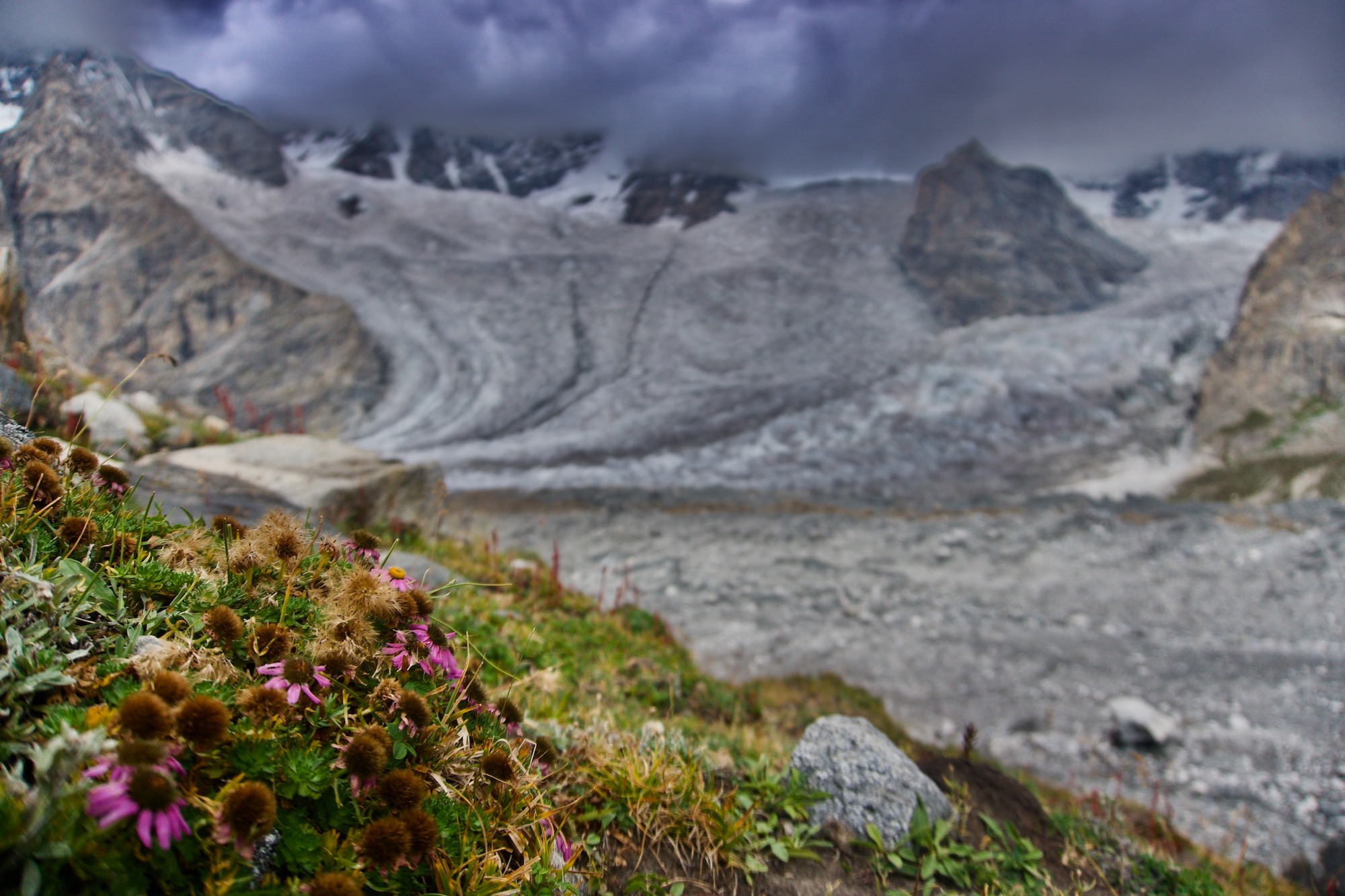
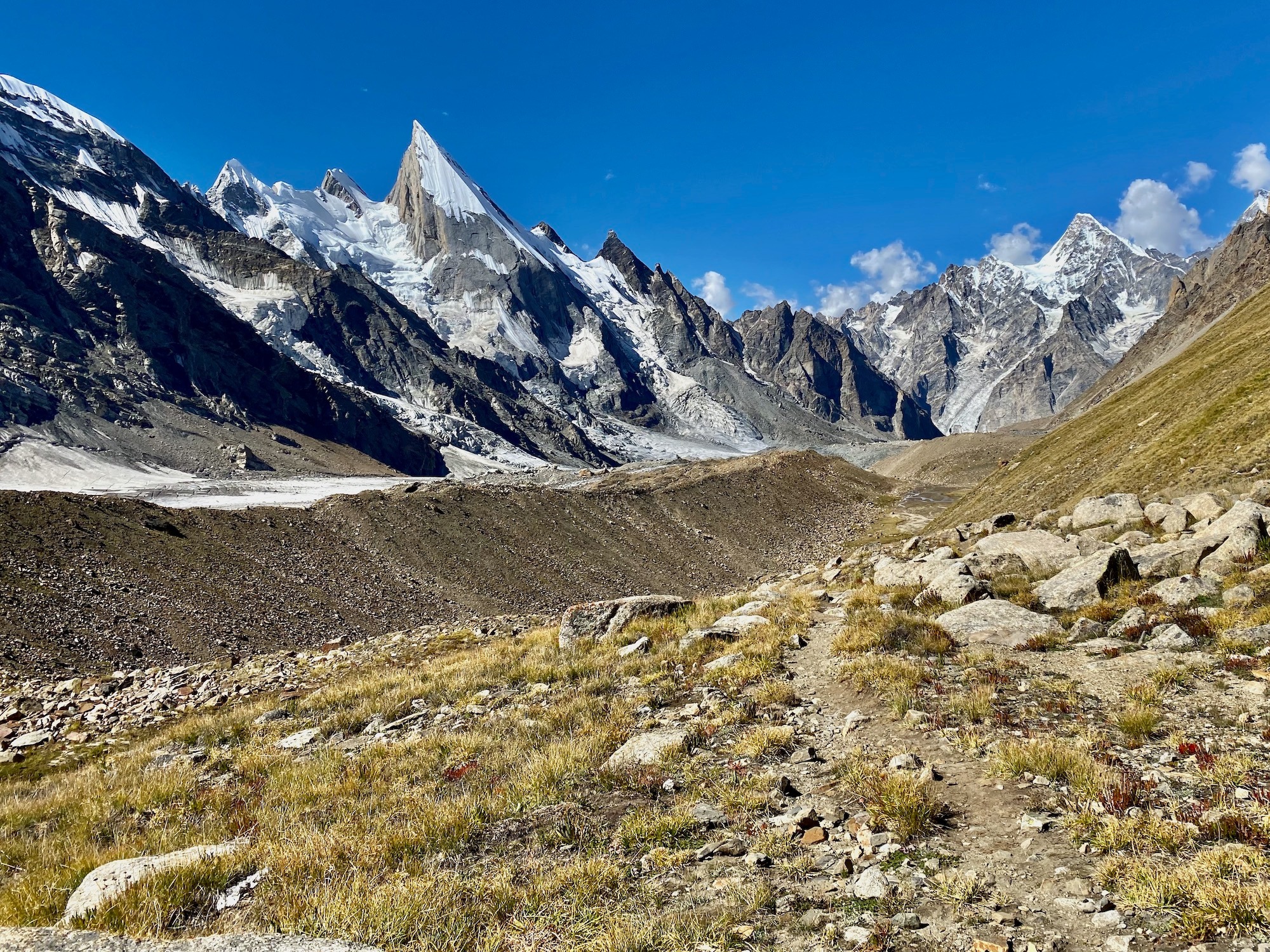
Pakistanis are an interesting breed of people. They like to talk about how much they respect women and how considerate they are towards them. Yet you hardly see a woman on the street in Skardu and almost all professions are done by men. When you do come across a woman, she is often covered from head to toe, because 98% of the population is Islamic. Truthful information carries absolutely no weight here. For instance, they might tell you in the afternoon that your wake-up call is at midnight (before you climb the Gondogoro Pass) and wake you up at 11:15 pm and when you ask: "Why the hell are you waking us up so early when we're still supposed to be asleep?!" they have no answer. Everything is relative and you have to chew and weigh any information yourself to come to a conclusion. No wonder we rename our guide after a few days to "The Feeder", because he keeps feeding us unverified information. Then, on the other hand, there is Zaheer, who becomes our Pakistani liaison right from the start and gives us serious answers to our questions. Without him, the Baltoro trek would be really hard to pull off. Zaheer is the cook, but also partly the expedition leader and guide in one person. He often goes as a cook on expeditions with Mara Holecek and was also part of the Possible Nimse Purji project, which climbed all 14 eight-thousanders in 7 months. Zaheer has golden hands and his culinary skills know no bounds. This dude makes the most delicious soup out of maybe even yak poop and cooks us incredible goodies. However, he has a soft spot for our girls (although he has family at home) and so we started calling him "Cheater". The Feeder and the Cheater. Nice pairing, don't you think?
Then we are accompanied by about 20 other people (porters and helpers) who are often without much experience. You can't officially go on the Baltoro trek without a local escort, so this leads to what I've always hated. A group of 6 trekkers have with them an army of porters carrying chairs, sleeping mattresses, chickens and other bizarre crap. The problem is that some of them are barely grown boys who wouldn't be served a beer in half the countries in the world and have no experience of high altitude trekking. Although sometimes that age is hard to gauge because the sunlight makes them all look 15 to 20 years older. On top of that, they wear inappropriate shoes (often sandals or sneakers) and have no basic medication. After a week on the trek, I feel like a mountain doctor. I am a specialist in skin problems and automatically hand out endiaron as part of my greeting. Our group is quite diverse and includes both 17 year old boys and a nearly 60 year old grandfather who carries heavy loads, making me feel quite out of place. Just imagine going on a trek with your grandpa/dad under K2 and him carrying all the stuff on his back. - all of it, even yours.
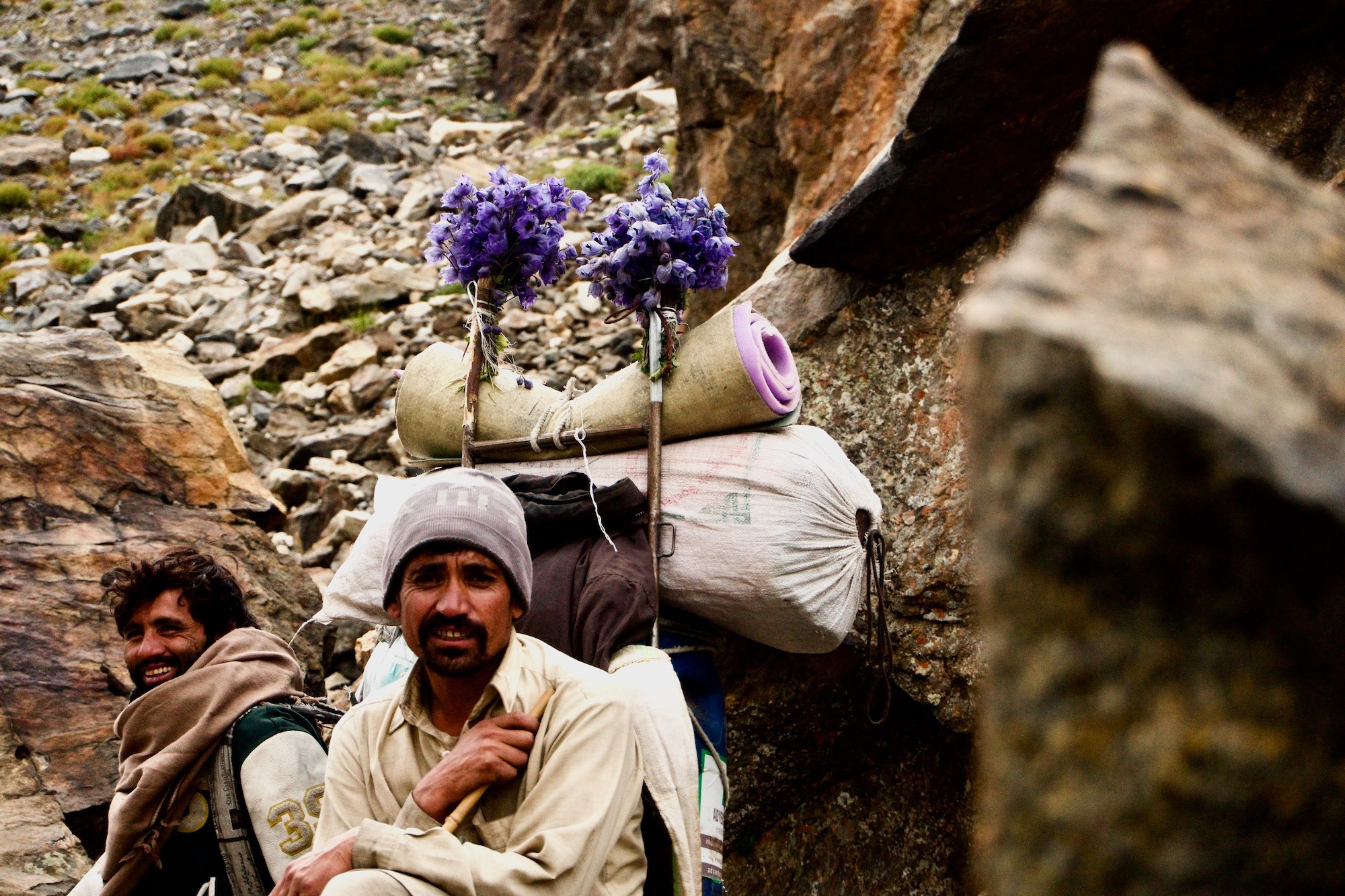
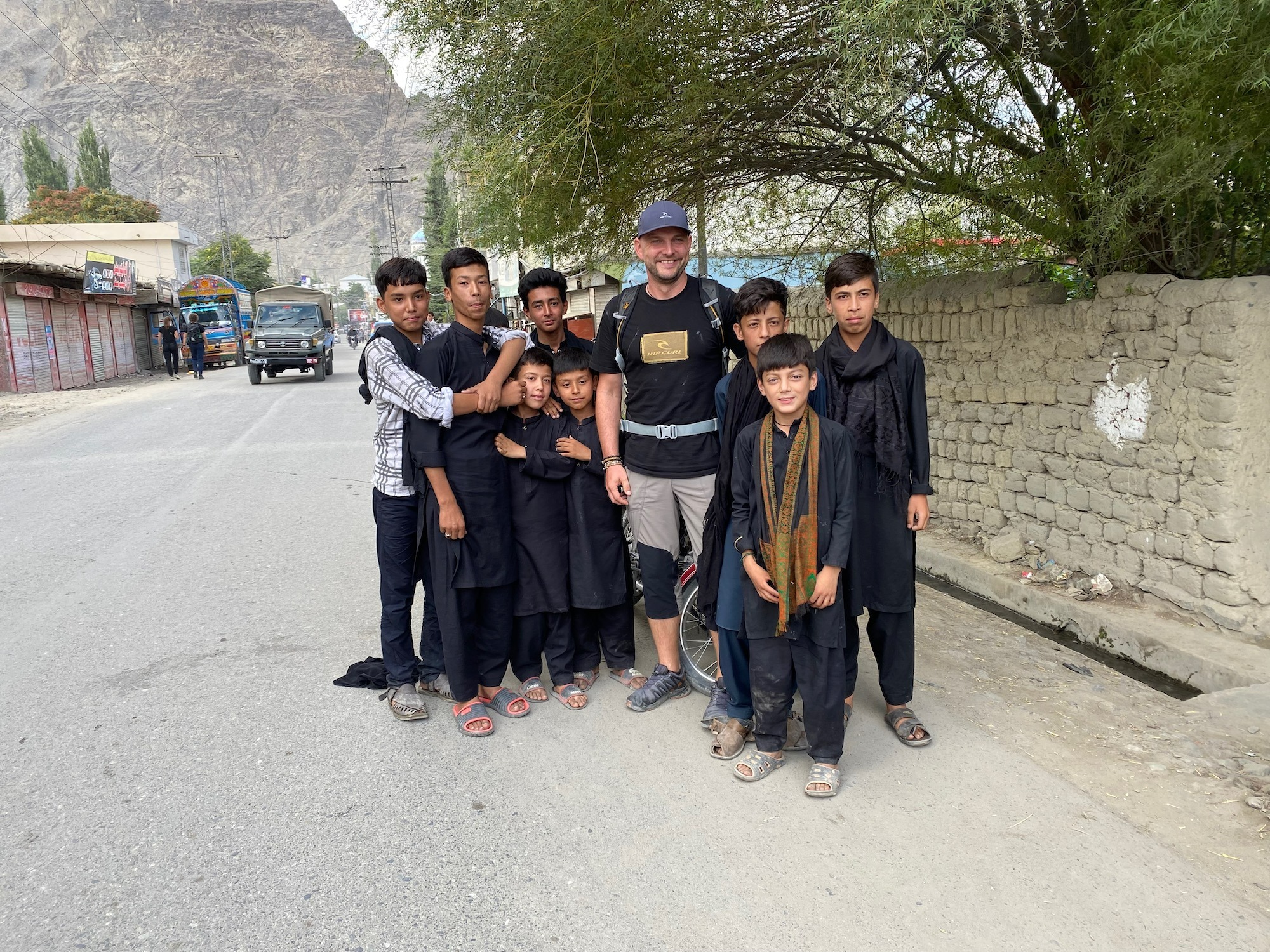
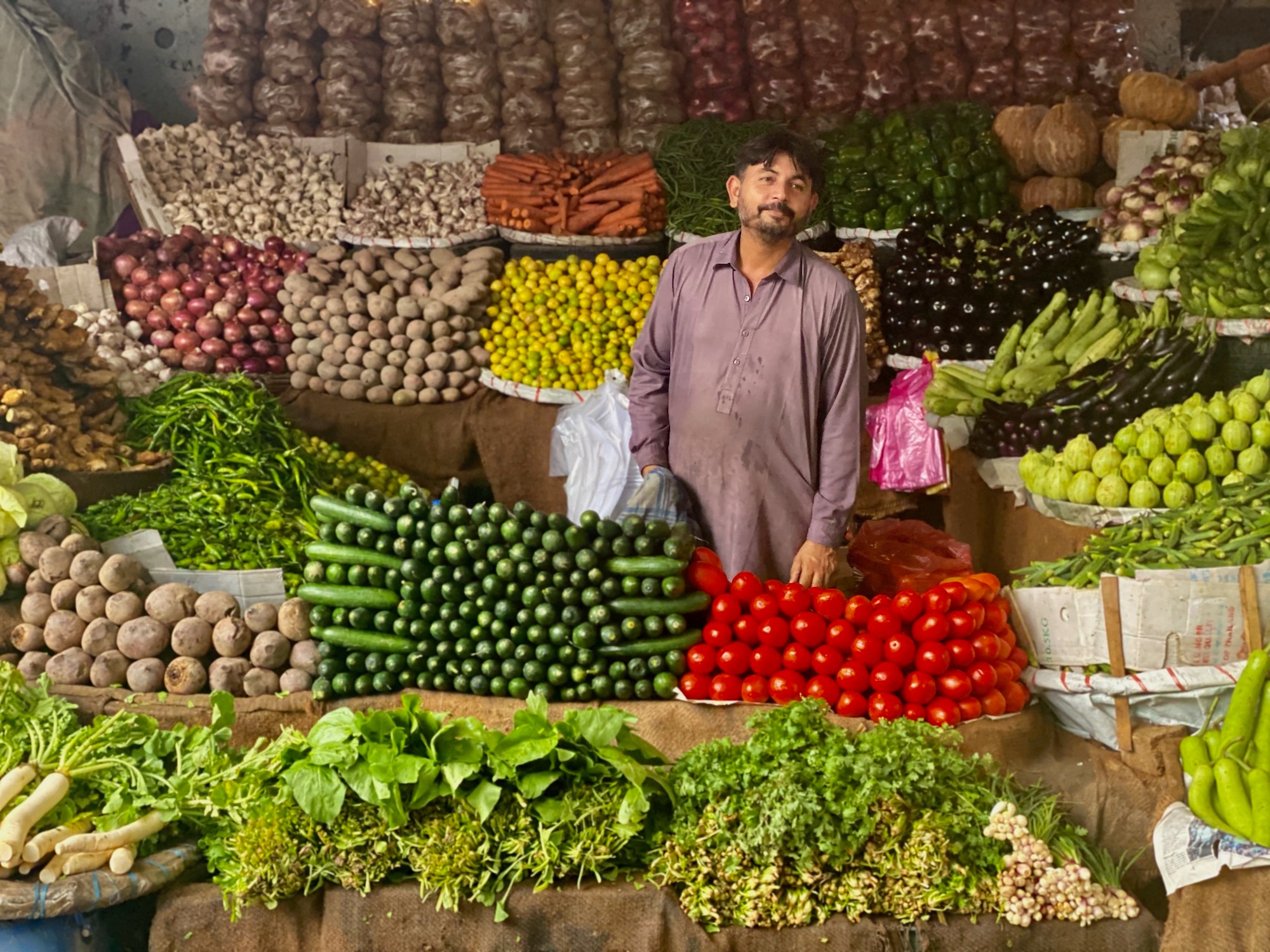
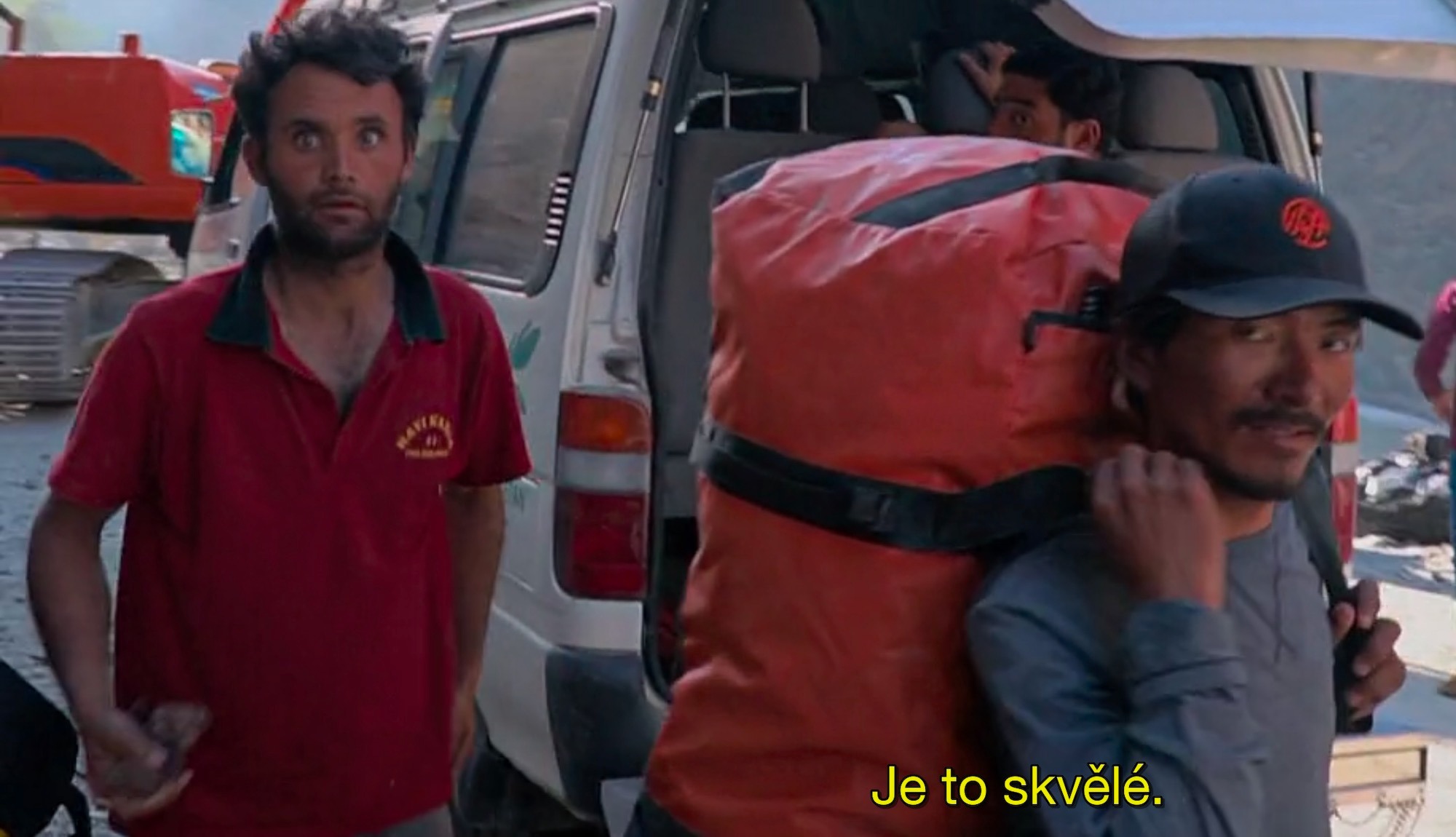
The agency is paid $2,050 and that price includes meals. In practice, it looks like Zaheer and his kitchen boys make us chapatis with eggs or omelettes every morning. We are constantly pouring through hectolitres of tea and white sugar with ketchup is a staple ingredient we would be utterly helpless without. Lunch is most often in the form of Chinese soup with biscuits and the real gluttony comes with dinner. We sampled just about every conceivable dish of Pakistani cuisine and despite Zaheer being a MASTER COOK, we were over eaten after a few days of rice. It's a staple of almost every meal and especially towards the end of the trek, we were willing to give absolutely anything for a simple pasta dish. One of the basic dictums is that you shouldn't give your food a name. However, we broke that right at the beginning of the trek and named our goat Milos. He was good. Really good, however, we were fed up with meat after the first week and preferred a vegetarian diet. Digestive problems, which our whole group gradually fought with, also had a significant impact on it. They don't really deal with hygiene here and I was shocked when they consider a place where our goat Miloš is tethered five meters above the ground as a clean source of drinking water and he poops there all day and night. We try to consume only boiled water, but in the case of rinsed fruit and vegetables, it is clear that one can easily make a mistake. The locals, however, have super hardy microflora and I personally witnessed our guide drinking freshly drawn water from the river that was completely brown and cloudy. He just took the scarf off his neck and used it as a filter. If we did that, we'd be useless within the hour. We come to appreciate Zaheer's incredible qualities the moment he bakes us a pizza at 4,800 meters or plays pastry chef and treats us to a cake. He's an incredible dude!
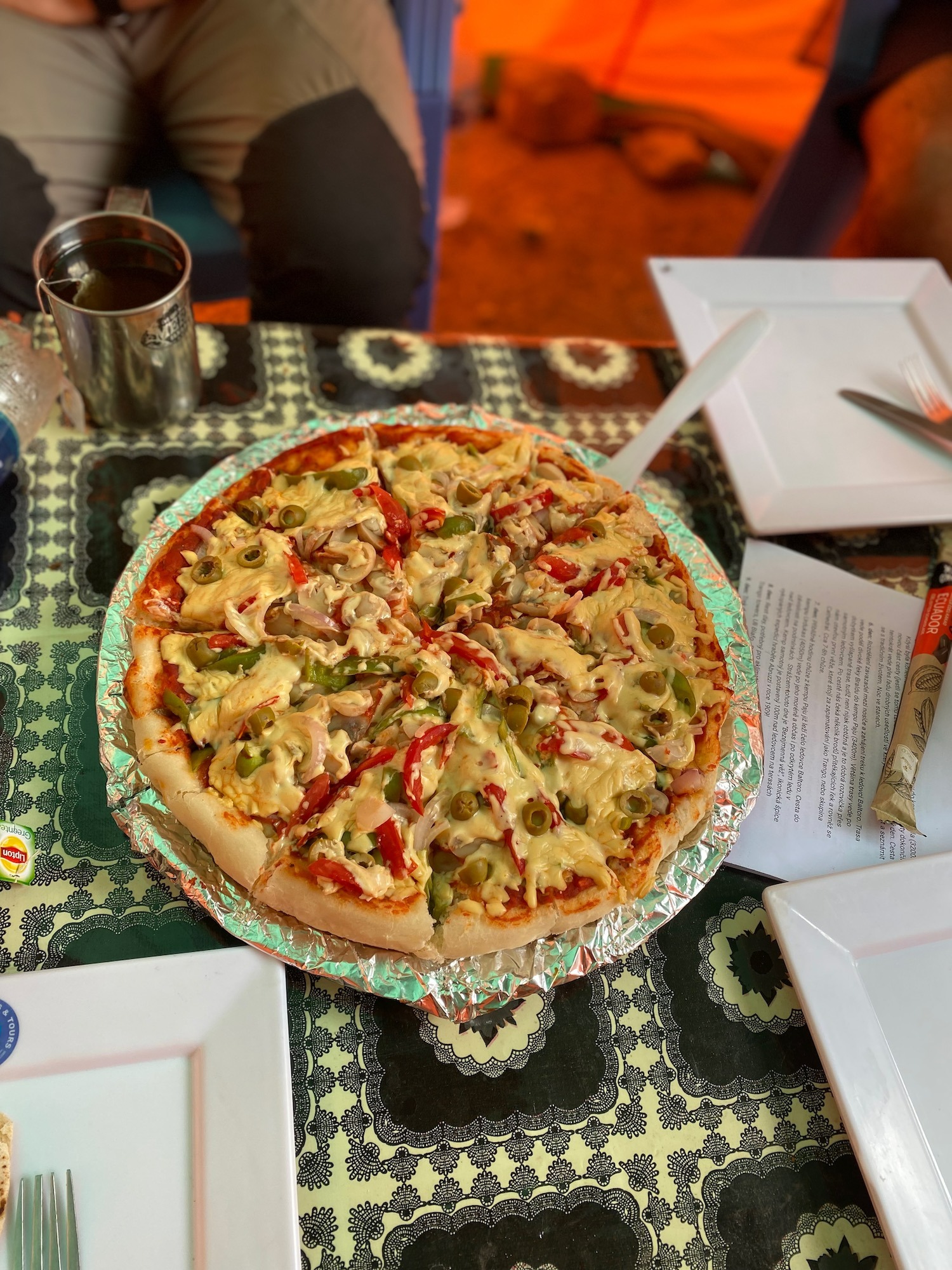
The experience of the Baltoro trek is quite contradictory. On the one hand, great views of the hills, which I have only dreamed about so far and looked forward to seeing them one day since I was a little boy. On the other hand, the Baltoro Glacier is an unreal stereotype. You spend 14 days just hanging around among the rocks. When you say glacier, most people think of beautiful white ice covered with a crust of snow. Not here. Most of the glacier is covered in dust and rocks, so you can be easily disappointed. What got me the most, however, was the communication with the local agency. The Pakistani mentality is set in such a way that anyone will nod or slap any information on you just to make you look unprepared. You have to take absolutely all information with a grain of salt. In the cities the situation is more cheerful, but there again you have to bargain. Prices are not fixed and not everyone is in the mood to haggle in a taxi just because I am a tourist and the meter is a dirty word. One can't help feeling that if the event were a week shorter, it would still be long. Maybe if we could have moved freely around Karakoram without an agency and had a couple of porters with us to help, I would have felt better. However, not to end on a negative note, I am very happy with the super group of participants that gathered here. Honestly I'd be hard pressed to find a person in my area that I wouldn't feel depressed with after three weeks, and here they pulled it off absolutely flawlessly. Thanks for a great team atmosphere and hope to see you again soon!
Ondřej Švirák
Trail Adventures
